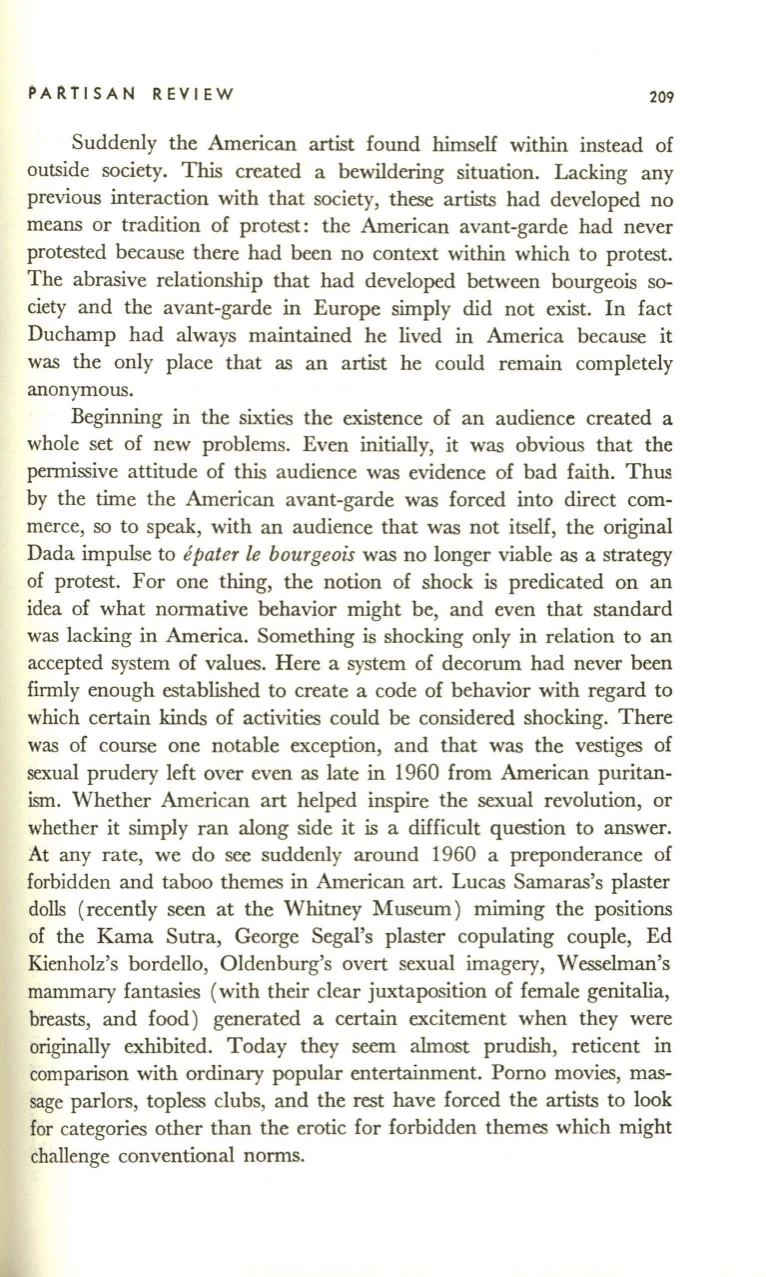
PAR.TISAN REVIEW
209
Suddenly the American artist found himself within instead of
outside society. This created a bewildering situation. Lacking any
previous interaction with that society, these artists had developed no
means or tradition of protest: the American avant-garde had never
protested because there had been no context within which to protest.
The abrasive relationship that had developed between bourgeois so–
ciety and the avant-garde in Europe simply did not exist. In fact
Duchamp had always maintained he lived in America because it
was the only place that as an artist he could remain completely
anonymous.
Beginning in the sixties the existence of an audience created a
whole set of new problems. Even initially, it was obvious that the
permissive attitude of this audience was evidence of bad faith. Thus
by the time the American avant-garde was forced into direct com–
merce, so to speak, with an audience that was not itself, the original
Dada impulse to
epater le bourgeois
was no longer viable as a strategy
of protest. For one thing, the notion of shock is predicated on an
idea of what normative behavior might be, and even that standard
was lacking in America. Something is shocking only in relation to an
accepted system of values. Here a system of decorum had never been
firmly enough established to create a code of behavior with regard to
which certain kinds of activities could be considered shocking. There
was of course one notable exception, and that was the vestiges of
sexual prudery left over even as late in 1960 from American puritan–
ism.
Whether American art helped inspire the sexual revolution, or
whether it simply ran along side it is a difficult question to answer.
At any rate, we do see suddenly around 1960 a preponderance of
forbidden and taboo themes in American art. Lucas Samaras's plaster
dolls (recently seen at the Whitney Museum) miming the positions
of the Kama Sutra, George Segal's plaster copulating couple, Ed
Kienholz's bordello, Oldenburg's overt sexual imagery, Wesselman's
mammary fantasies (with their clear juxtaposition of female genitalia,
breasts, and food) generated a certain excitement when they were
originally exhibited. Today they seem almost prudish, reticent in
comparison with ordinary popular entertainment. Porno movies, mas–
sage parlors, topless clubs, and the rest have forced the artists to look
for categories other than the erotic for forbidden themes which might
challenge conventional norms.


